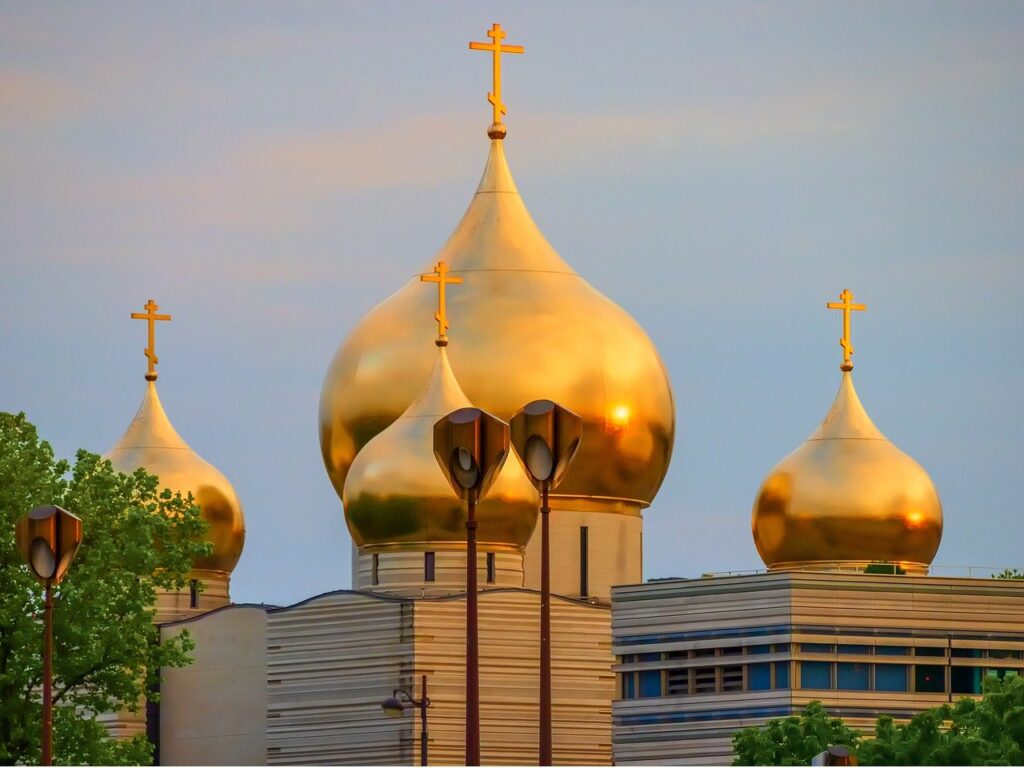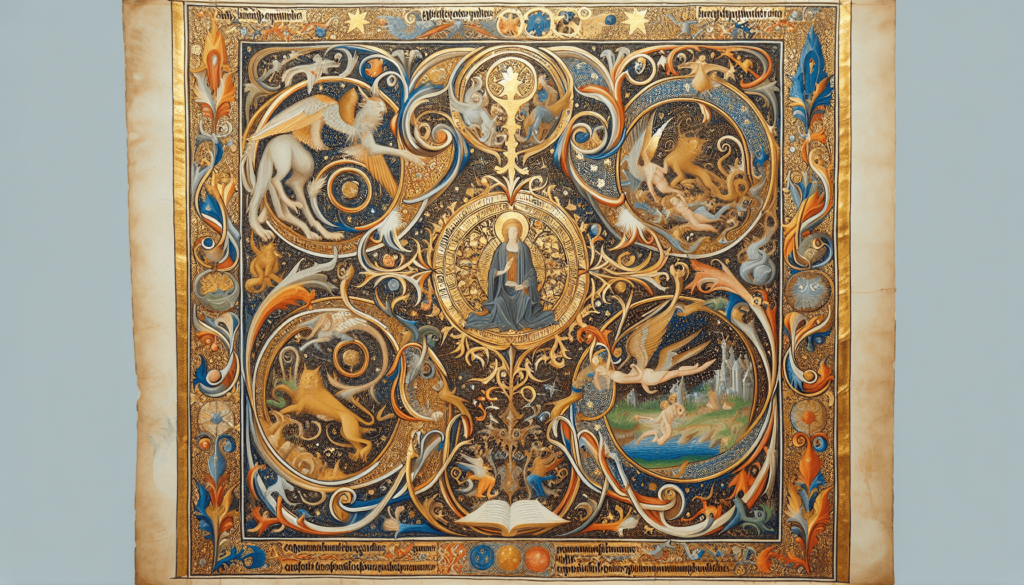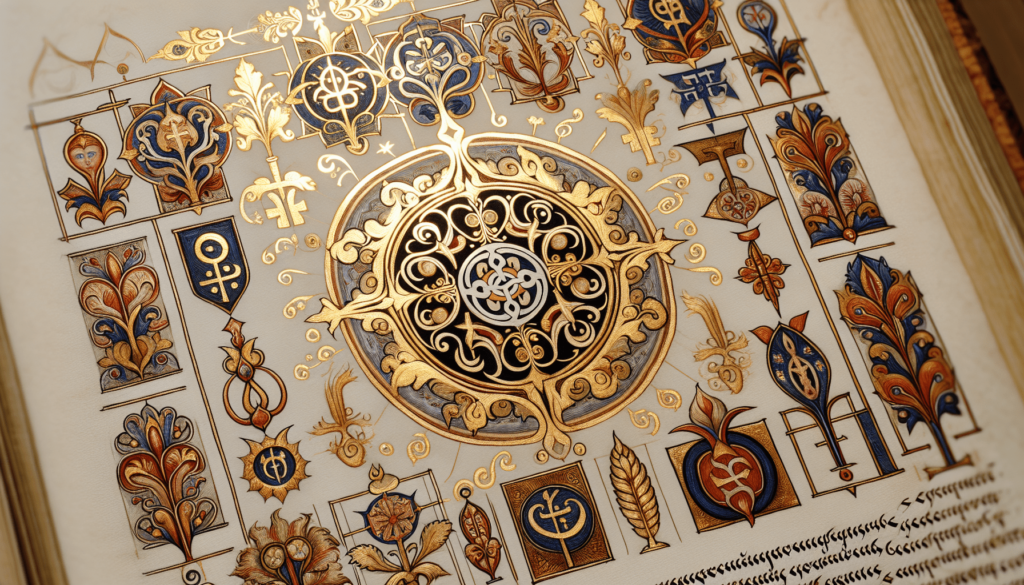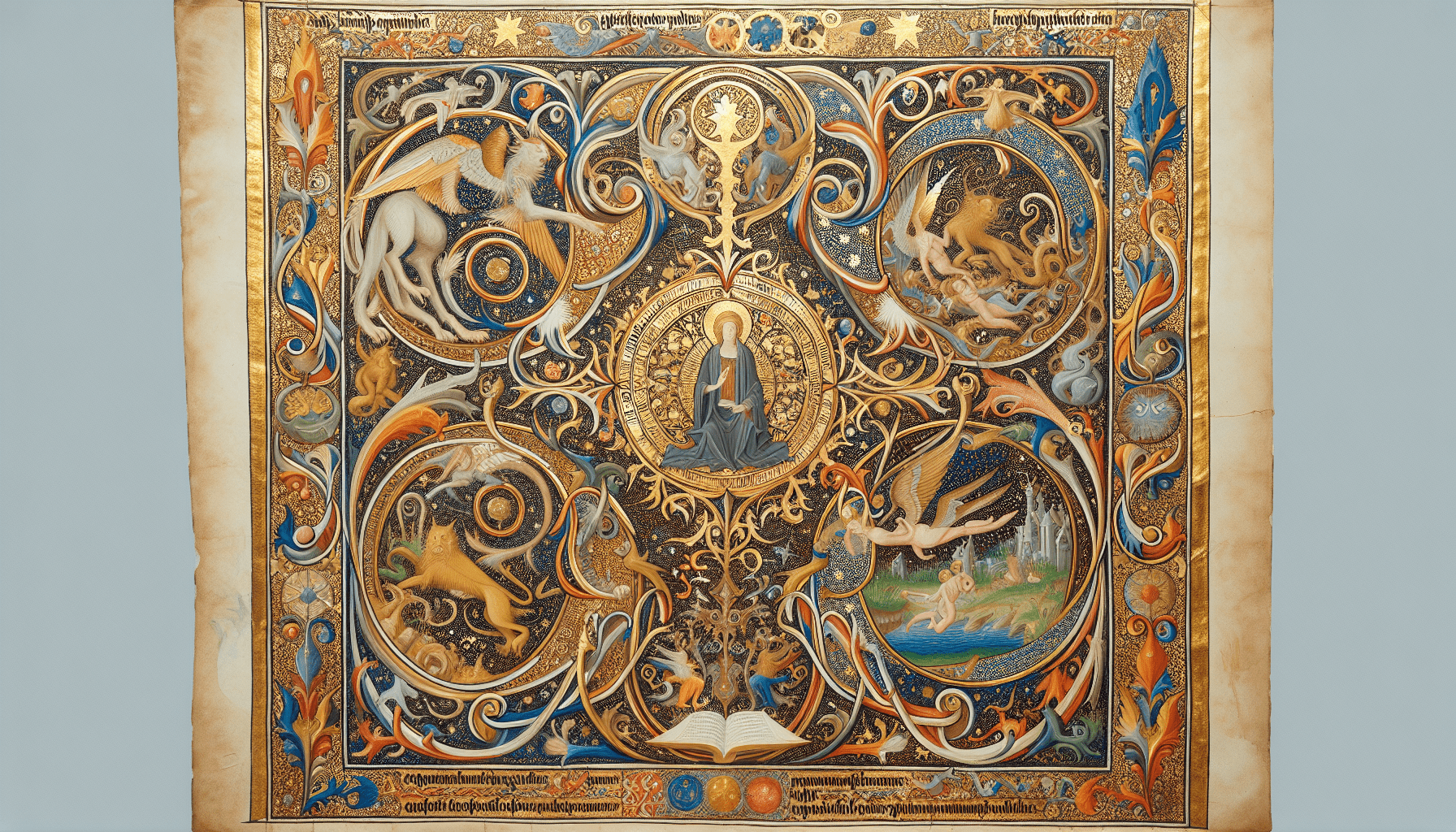Are you fascinated by the intricate beauty of traditional illumination art? Have you ever wondered about the deeper meaning behind these captivating creations? In this article, we will explore the profound influence of religion on traditional illumination art. From the symbolism of religious motifs to the spiritual significance infused in each stroke, discover how religion has shaped and continues to inspire this age-old art form. Embark on a journey of enlightenment as we delve into the intricate connection between religion and traditional illumination art.
Introduction
Traditional Illumination Art refers to a form of artistic expression that involves the intricate and detailed decoration of manuscripts, typically religious texts, with vibrant colors, gold leaf, and ornate designs. This ancient art form has long been intertwined with religious beliefs and practices, serving as a visually striking medium to convey spiritual messages and deepen the connection between the divine and the mortal world. Religion forms the foundation of Traditional Illumination Art, providing it with purpose, meaning, and guiding principles.
Definition of Traditional Illumination Art
Traditional Illumination Art is characterized by the use of various artistic techniques, materials, and styles to adorn manuscripts and religious texts with beautiful and ornamental designs. It involves the careful application of pigments, most notably gold, to create vibrant illustrations, decorative borders, and intricate calligraphy. Illuminated manuscripts often feature religious symbols, figures, and themes, aiming to capture the essence of divine wisdom and inspire spiritual contemplation.

Importance of Religion in Traditional Illumination Art
Religion plays a crucial role in Traditional Illumination Art, serving as its very foundation and source of inspiration. As a vehicle for religious expression, illuminated manuscripts hold deep spiritual significance for believers. They provide a tangible representation of religious teachings and enable individuals to engage with their faith in a visual and contemplative manner. Traditional Illumination Art goes beyond mere aesthetics; it creates a bridge between the earthly and the divine, inviting individuals to explore the mysteries of faith and deepen their spiritual connection.
Historical Background
Origin of Traditional Illumination Art
The origins of Traditional Illumination Art date back to ancient civilizations, such as the ancient Egyptians and Mesopotamians, who adorned their sacred texts with illuminations. However, it was during the medieval period in Europe that this art form truly flourished. Monastic scriptoria became centers for the production of illuminated manuscripts, with monks meticulously creating intricate designs and illustrations using pigments made from minerals, plants, and even insects.
Spread and Development of the Art Form
With the rise of Christianity in Europe, Traditional Illumination Art spread rapidly. Monasteries and religious institutions dedicated significant resources and manpower to the creation of illuminated manuscripts, which served not only as a means of preserving and disseminating religious texts but also as a testament to the devotion and piety of the faithful. As the art form evolved, it embraced various regional styles and techniques, reflecting the diverse cultural influences and religious practices of different regions.
Religious Symbolism and Iconography
Depiction of Religious Figures
Traditional Illumination Art often includes depictions of religious figures, such as Jesus, the Virgin Mary, prophets, saints, and angels. These representations aim to honor and pay homage to these revered individuals while also bringing their stories and teachings to life. The intricate details and careful renderings convey a sense of reverence and divinity, inviting viewers to form a deeper connection with these figures.
Incorporation of Religious Symbols
Religious symbols, such as crosses, doves, lambs, and halos, are widely incorporated into Traditional Illumination Art. These symbols carry deep religious meaning and act as visual cues to enhance the spiritual significance of the illuminated manuscripts. By infusing the pages with symbols of faith, artists seek to instill a sense of awe and reverence, reinforcing the divine nature of the depicted narratives.
Representations of Sacred Texts
Traditional Illumination Art often encompasses the representation of sacred texts, such as the Bible, Qur’an, Torah, or Buddhist scriptures. By carefully illuminating these texts, artists highlight their importance and convey their sacredness. Illustrations accompanying the text not only serve to enhance understanding but also create a visual narrative that helps individuals engage more deeply with the religious teachings.
Religious Themes and Subjects
Biblical Stories and Parables
Traditional Illumination Art frequently depicts stories and parables from religious texts, particularly from the Bible. These visual narratives capture pivotal moments from scripture and imbue them with vibrant colors, intricate details, and symbolic representations. Through these illustrations, believers are transported into the world of the divine, experiencing the profound lessons and moral teachings embedded within these sacred stories.
Depictions of Religious Festivals and Events
Religious festivals and events hold great significance in Traditional Illumination Art. Artists often highlight the celebrations of key religious events, such as Christmas, Easter, Ramadan, or Diwali, through vivid illustrations and decorative embellishments. These representations serve to commemorate and remind believers of the profound spiritual significance of these occasions, fostering a sense of connection and shared faith.
Miracles and Divine Intervention
Traditional Illumination Art often depicts miracles and acts of divine intervention, showcasing the power and mercy of the divine. These illustrations, filled with awe-inspiring visuals, serve as a reminder of the extraordinary and supernatural occurrences embedded within religious traditions. By visually representing these miracles, artists aim to inspire awe, wonder, and faith in the viewers.

Devotion and Spiritual Connection
Expression of Faith and Devotion through Art
Traditional Illumination Art enables individuals to express their faith and devotion through artistic creation. Artists invest hours of meticulous work and heartfelt dedication into each illuminated manuscript, infusing it with their own spiritual energy and reverence for the divine. Through the act of creation, artists deepen their own connection to their faith and offer a medium through which others can experience spiritual transcendence.
Creation of Sacred Spaces
Illuminated manuscripts, adorned with elaborate designs and vibrant colors, create sacred spaces within the pages of the text. The meticulously crafted illustrations and calligraphy transport the viewers to a realm beyond the mundane, inviting them to immerse themselves in the beauty and wisdom of the divine. These sacred spaces provide solace, inspiration, and a tangible connection to the spiritual realm.
Religious Rituals and Traditions
Traditional Illumination Art is often closely tied to religious rituals and traditions. Manuscripts are created with great care and reverence, often accompanied by specific rituals, prayers, and blessings. The act of illuminating these texts becomes a sacred journey, where artists connect with their faith and channel divine inspiration to create visually captivating works of art. Similarly, the process of reading or viewing illuminated manuscripts is often accompanied by rituals and reverence, further enhancing the spiritual experience.
Artistic Techniques and Materials
Use of Gold and Precious Pigments
Gold, with its radiant and lustrous properties, is a prominent feature of Traditional Illumination Art. Artists use gold leaf or gold paint to embellish manuscripts, highlighting significant elements and imbuing them with an ethereal glow. The use of precious pigments, such as lapis lazuli and cochineal, adds depth, richness, and vibrancy to the illustrations, underscoring the opulence and spiritual value of the illuminated manuscripts.
Intricate Calligraphy and Geometric Patterns
Traditional Illumination Art is renowned for its intricate calligraphy, with artists employing fine penmanship to write out religious texts with precision and grace. The calligraphy serves not only as a means of conveying the content but also as a visual art form, with stylistic flourishes and elaborate scripts enhancing the aesthetic appeal of the manuscripts. Geometric patterns, often inspired by architecture and nature, grace the borders, further accentuating the beauty and complexity of the art.
Mastering Illumination Techniques
The creation of illuminated manuscripts demands a mastery of various illumination techniques. Artists employ techniques such as stippling, cross-hatching, and layering to achieve depth and dimension in their illustrations. The application of pigments and gold requires a delicate touch and precise execution to achieve the desired effect. Mastery of the illumination techniques is acquired through years of practice and a deep understanding of the art form’s historical and cultural context.

Mystical and Symbolic Interpretations
Hidden Meanings and Allegories in Illuminated Art
Traditional Illumination Art often features hidden meanings and allegorical representations within its illustrations. These hidden symbols and allegories may require a deeper level of interpretation to uncover their spiritual significance. The use of symbolism often invites viewers to engage in profound contemplation, unraveling the layers of meaning embedded within the artwork and connecting with the deeper mysteries of faith.
Spiritual Insights and Revelations
Traditional Illumination Art can offer spiritual insights and revelations to those who engage with it. The visual narratives and intricate details allow for a deeper understanding and contemplation of religious teachings. The process of viewing or studying illuminated manuscripts can elicit spiritual epiphanies, moments of clarity, and a heightened awareness of the divine presence. The art becomes a catalyst for personal spiritual growth and a means to connect with deeper truths.
Preservation and Conservation
Religious Institutions as Custodians of Illumination Art
Religious institutions have played a vital role in preserving and safeguarding Traditional Illumination Art throughout history. Monasteries, churches, and mosques often served as centers for creation, collection, and preservation of illuminated manuscripts. The religious communities recognized the spiritual and cultural significance of these artworks, ensuring their protection and longevity for future generations.
Challenges in Preserving Illuminated Manuscripts
Preserving illuminated manuscripts presents significant challenges due to factors such as age, environmental conditions, and the delicate nature of the materials. Over time, pigments may fade, pages may deteriorate, and the intricate details may be at risk of damage. Cultural institutions and conservationists face the ongoing task of implementing measures to prevent further deterioration, including climate-controlled environments, careful handling, and periodic restoration efforts.

Continuity and Adaptation
Influence of Religion on Contemporary Illumination Art
Religion continues to exert a profound influence on contemporary Illumination Art. Artists today draw inspiration from religious themes, symbols, and teachings, infusing their creations with spiritual depth and meaning. While contemporary illuminated art may embrace modern styles and techniques, its connection to religious traditions remains strong, serving as a testament to the enduring power of faith to inspire and shape artistic expression.
Evolution of Style and Subject Matter
As with any art form, Traditional Illumination Art has evolved over time. Cultural shifts, artistic movements, and the influences of various religious traditions have led to the development of diverse styles and subject matter within illuminated art. From the intricate detail of medieval European manuscripts to the bold colors and geometric patterns of Islamic Illumination Art, each era and culture has left its mark on the art form, resulting in a rich tapestry of styles and aesthetics.
Global Impact and Cultural Exchange
Spread of Illumination Art across Different Religions and Cultures
The influence of Traditional Illumination Art extends beyond its origins in Europe and has transcended religious boundaries. Islamic, Jewish, Hindu, and Buddhist traditions have all embraced the art form, adapting it to suit their respective religious texts and cultural aesthetics. The global spread of illumination art has fostered cultural exchange, promoting understanding, appreciation, and the celebration of diversity among different religious and cultural communities.
Influence of Eastern Religions on Western Illumination Art
Eastern religions, such as Buddhism and Hinduism, have had a profound impact on Western Illumination Art. Ideas, artistic techniques, and cultural motifs originating in the East have influenced the development of Western illuminated manuscripts. The exchange of artistic traditions and the incorporation of Eastern elements into Western art have enriched Traditional Illumination Art, establishing it as a universal expression of religious devotion and spiritual reflection.
In conclusion, Traditional Illumination Art owes its existence, purpose, and enduring appeal to the influence of religion. Across time and cultures, religion has provided the guiding principles, inspiration, and subject matter for this unique form of artistic expression. From the intricate designs and vibrant colors to the hidden symbolism and spiritual insights, Traditional Illumination Art continues to captivate and inspire individuals around the world, inviting them to embark on a journey of deep spiritual connection and contemplation.


Leave a Reply